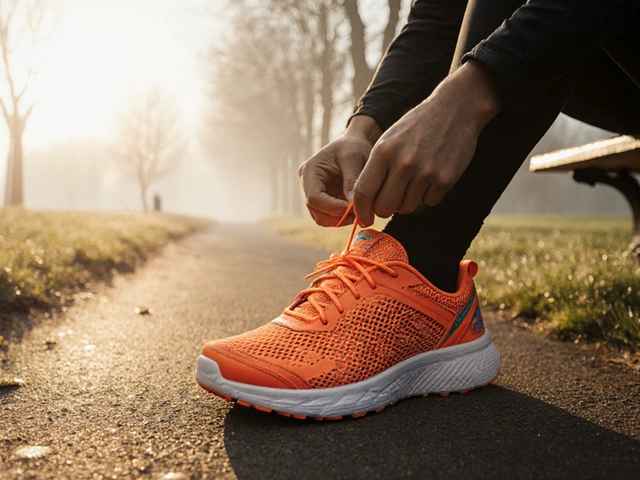Running Shoe Fit: How to Find the Right Fit for Your Feet and Stride
When it comes to running shoe fit, the way a shoe connects with your foot during motion. It's not just about size—it's about how the shoe supports your arch, cushions your heel, and lets your toes move naturally. A poor fit can lead to blisters, plantar fasciitis, or even stress fractures. A good fit? It feels like an extension of your foot—no tight spots, no sliding, no guessing.
What makes one shoe fit better than another? It starts with your foot type, whether you have flat feet, high arches, or something in between. If you overpronate—your foot rolls inward too much—you need stability shoes. If you’re a supinator—with high arches and little natural shock absorption—you’ll want extra cushioning. Then there’s shoe drop, the height difference between the heel and forefoot. Some runners prefer zero drop for a barefoot feel; others need 8–12mm to ease strain on their calves. And don’t forget pronation, how your foot rolls when it hits the ground. It’s not a flaw—it’s your body’s natural way of absorbing impact. The right shoe works with it, not against it.
Many people buy running shoes based on looks, brand, or what a friend swears by. But your stride, your weight, your mileage—they all change what you need. A shoe that works for a 100-pound trail runner won’t suit a 200-pound road runner logging 40 miles a week. Even the same person needs different shoes if they switch from pavement to trails or start training for a marathon. That’s why trying shoes on at the end of the day, wearing your actual running socks, and walking or jogging around the store matters more than any online review.
There’s no magic formula. But if you know your foot type, understand how shoe drop affects your gait, and pay attention to how your toes feel when you run—most fit problems disappear. The best running shoe fit doesn’t scream for attention. It just disappears on your feet, letting you focus on the road ahead.
Below, you’ll find real guides that break down exactly what to look for—whether you’re chasing your first 5K or trying to shave minutes off your marathon time. No fluff. Just what works.
Running Shoes Mistakes to Avoid - Top Pitfalls When Buying
Discover the most common running shoe mistakes and learn how to avoid them. Get fit tips, pronation advice, heel‑drop guidance, and terrain matching for a safer run.





